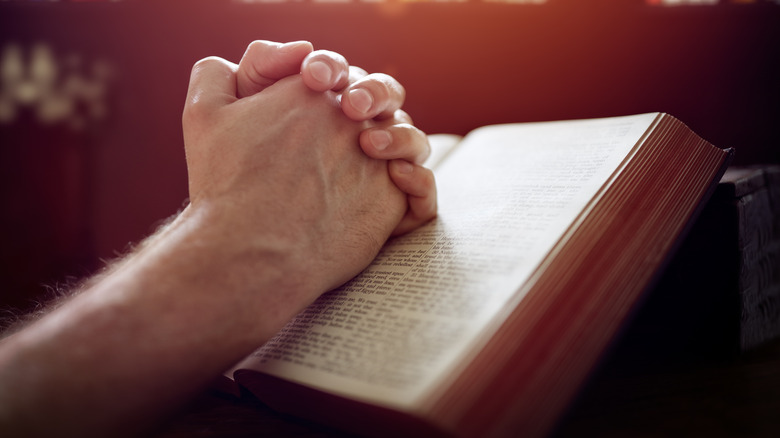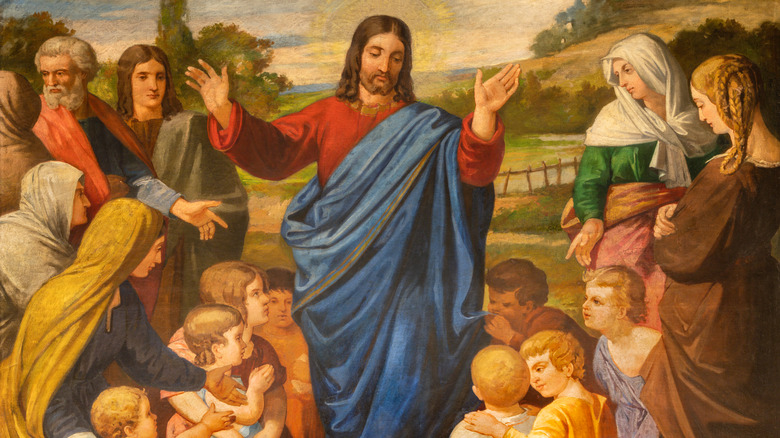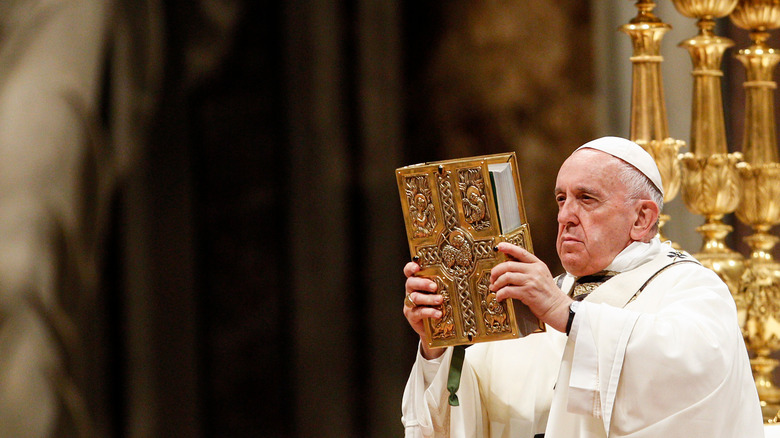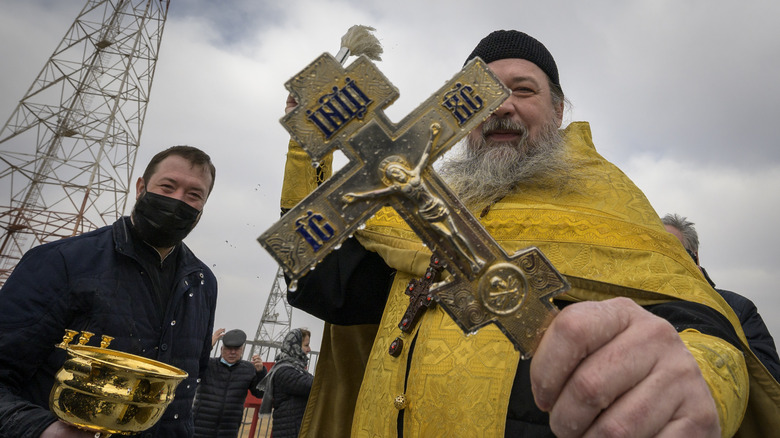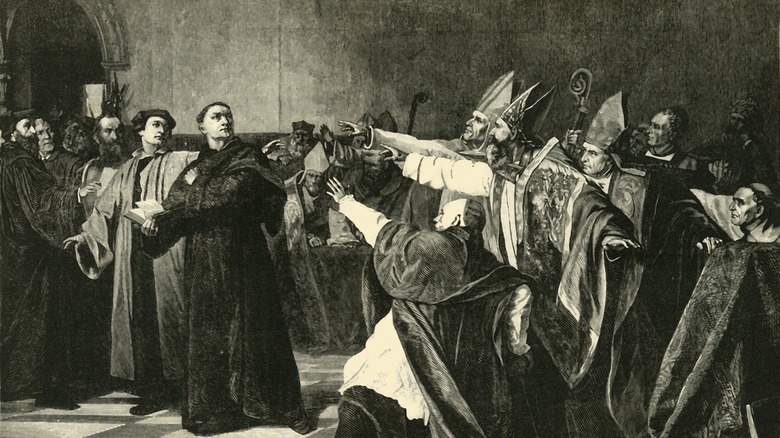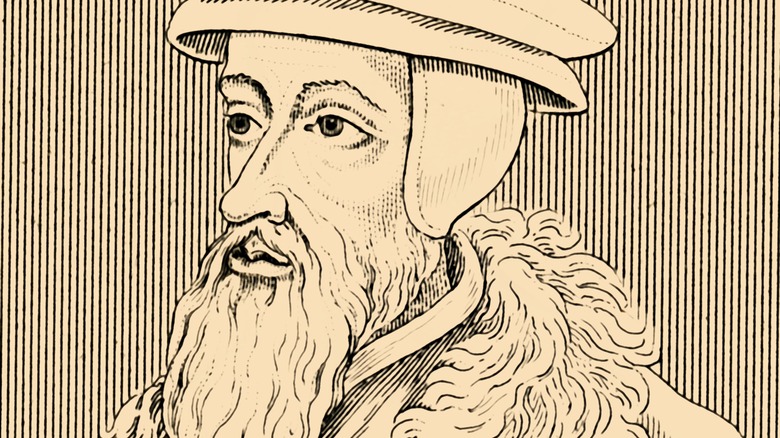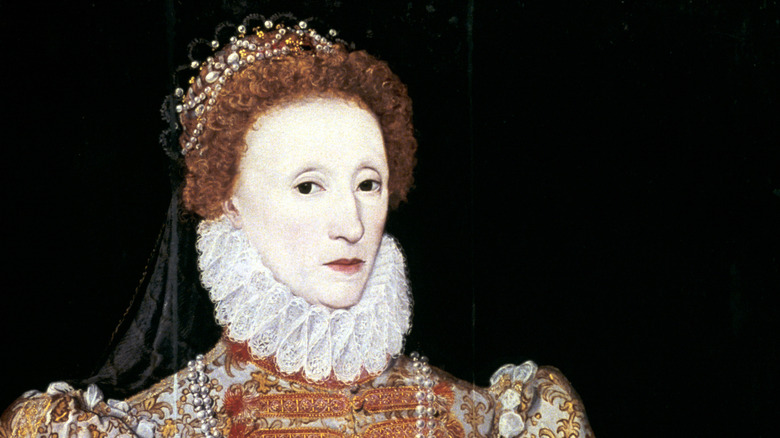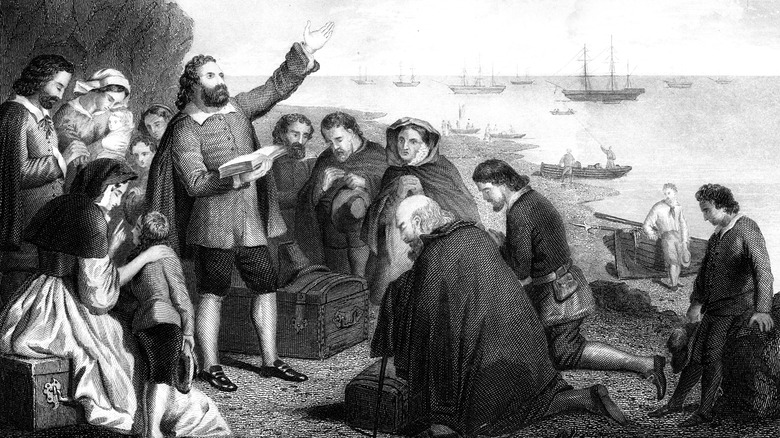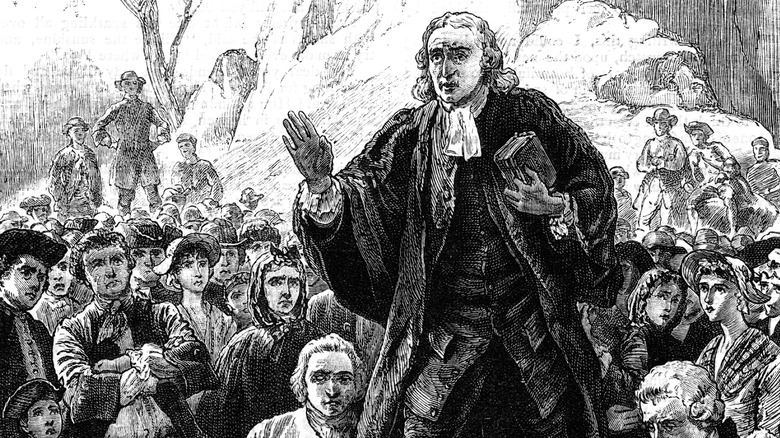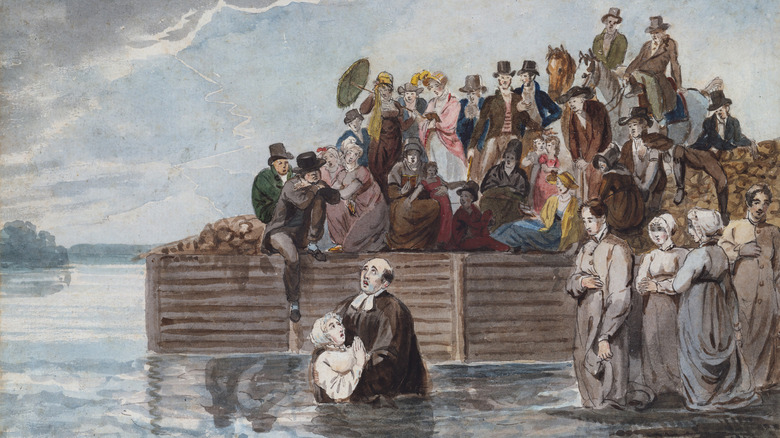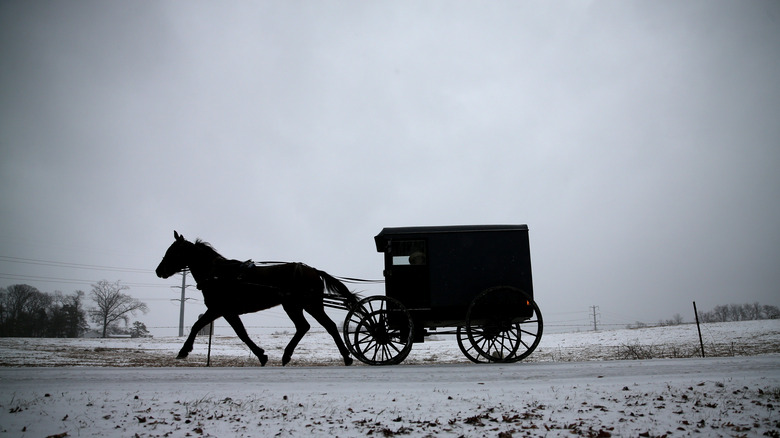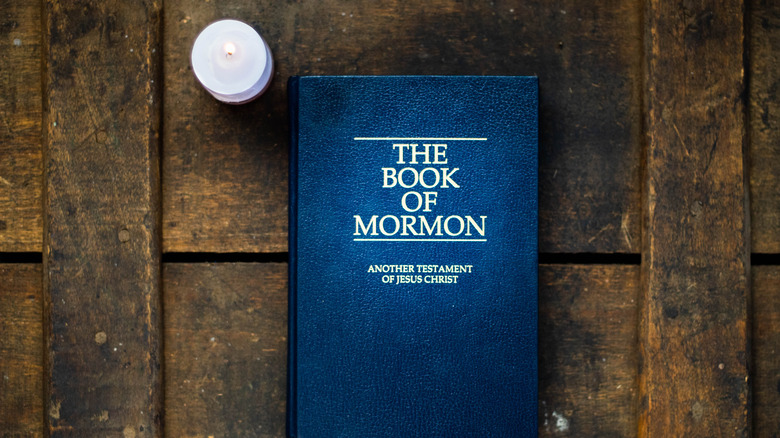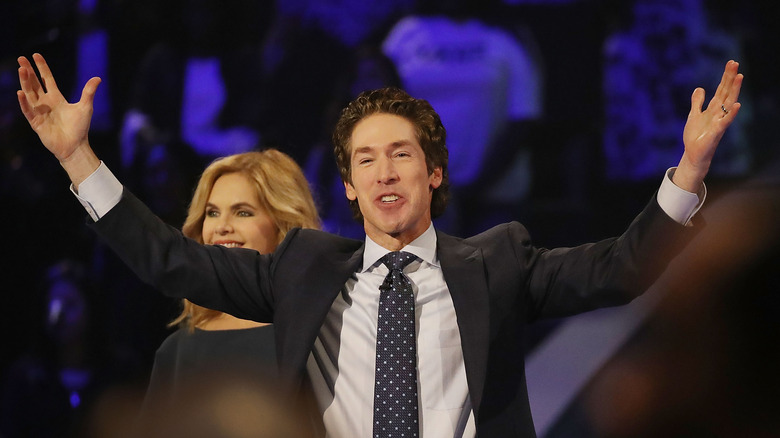Major Christian Denominations Explained
Christianity is the largest faith in the world. Out of the approximately 8 billion humans living on Earth, over 2 billion call themselves Christian, per World Atlas. At the core of Christianity is the belief that a little over 2,000 years ago, a man named Jesus Christ preached about the kingdom of God, was God's son, died on a cross for the sins of humanity, and rose again on the third day. And of course, the belief that the Bible is the inspired word of God. Pretty simple right? Well, while Jesus may have had one kind of church in mind, his followers tend to disagree.
According to Live Science, the Christian faith currently has 45,000 denominations. Why so many? From the time Jesus began preaching about his church, there have been disagreements and questions on how to interpret his words and the rest of the bible. Do we eat meat? Is the Son of God equal to God? Is God, Jesus, and the Holy Spirit one or three separate entities? And probably the most important: How much power are church leaders meant to have? While piety has spurred on church separations and reformations, power and politics have certainly played their part as well.
First Century Christians
Christianity is so deeply embedded in Western culture that our calendar is based on when we believe Jesus Christ was born. Anything prior to his life was B.C. ("Before Christ"), and anything after is A.D., meaning "Anno Domini" — Latin for "the year of our Lord", per Time. The folks who followed Jesus during his life on Earth and shortly after his death would be the first Christians, and they were not part of a denomination. Though in a sense, Christianity in and of itself was a denomination of Judaism since most of God's followers — and Christ himself — were Jewish.
According to World History, Jewish prophets throughout time promised God's restoration of Israel after several military defeats to their neighbors the Babylonians and Assyrians. They preached that "God would designate a descendant of David, an 'anointed one,'" which is "Messiah" in Hebrew, or "Christos" in Greek. This savior would establish a new kingdom, the kingdom of God. When Jesus of Nazareth began to preach that he was the messiah, those who believed and followed him created the branch of Judaism we know as Christianity.
Per PBS, first-century Christians still held on to many of their Jewish customs for decades, and Jesus himself adhered to Jewish law up until he began his ministry. He did not begin preaching until he turned 30, the age when it was custom in Jewish culture for a man to become a rabbi, Evangel Magazine reports.
Catholicism
Most resources will corroborate what the Catholic Church believes — that it is not a denomination but a continuation of the first century Church and Saint Peter, its first pope. Per the Book of Matthew, Peter was one of the first followers of Christ. After confessing his belief that Jesus was the Son of God, Jesus said, "on this rock I will build my church". How one interprets what was meant by "rock" determines whether you're a Catholic or not.
According to Catholic Answers, Catholics believe the rock was Peter, and Protestants believe the rock was his confession of faith. Catholics believe in the papal system, which is a religious government with the pope as the head. Peter established a church in Antioch, where he ordained Saint Ignatius as its bishop. Ignatius' letters to the church were written around A.D. 107 and are the earliest appearance of the term "Catholic Church" in physical records. Notably, he used the Greek term "katholike ekklesia," which simply means "universal assembly."
The Catholic Church believes Peter founded the church in Rome, was martyred there in the time of Nero (A.D. 60s), and St. Peter's Basilica in the Vatican was built over his burial site, per the Biblical Archaeology Society. The Vatican in Rome is where the present-day pope lives and is the center of the Church's establishment. Indeed, the Catholic Church is the largest Christian organization in the world. According to the BBC, there are over a billion Catholics covering all five continents, all bound together by their faith in Jesus Christ and the supremacy of the pope.
Orthodox
In the A.D. 300s, the Catholic Church began to solidify its position as the religion of the Roman Empire. According to B.C. Catholic, in 313, Emperor Constantine made Christianity legal, effectively ending centuries of persecution. In 325, he moved the center of government from Rome to the Greek city of Byzantium, which became Constantinople, and later Istanbul. Constantine encouraged the writing of the Nicene Creed, which stated what the Church believed and is still used by the denomination to this day. While Constantine is often credited for making Christianity the state religion of the Roman Empire, this was not actually accomplished until 380 — after his death. Even so, he was clearly a heavy influence on the religion's wide-reaching acceptance and proliferation.
Constantine's move to Byzantium created two separate church cultures over time — one of the West in Rome and one of the East in Byzantine. By the year 1054, this led to what is known as the Great Schism, a time when Eastern Catholics broke from the West and became what is called "Orthodox". According to National Geographic, while the two churches disagreed on minor rituals — such as whether or not to use leavened bread for the sacrament — the schism was caused by political differences including whether or not the pope in Rome had authority over the patriarch of the Eastern Church. When the Eastern Church did not accept Rome's papal authority, Rome excommunicated the church in Constantinople. The Eastern Church returned the favor by excommunicating the West. Today, over 260 million people consider themselves Eastern Orthodox, making it the second-largest Christian denomination.
Protestants
The Protestant movement was one of politics, the invention of the printing press, and a man named Martin Luther. Luther was a Catholic monk who protested the Church's practice of indulgences — a payment to the institution for the atonement of sin. He believed that forgiveness for sins happened through faith alone. In 1517, Luther wrote his dissent, the 95 theses, and nailed it to the church door in Wittenberg, Germany. According to Vox, Luther was excommunicated by the Catholic Church by 1520.
Since the time of Constantine, the Church and the rulers of the Roman Empire became enmeshed. By the time of Martin Luther, the emperor of Rome was considered ordained by God, and heresy was a crime not just of faith but of the state. Needless to say, Luther was considered a heretic and wanted for arrest. The German prince Frederick III protected Luther in protest of his arrest. According to Vox, Protestantism at the time was used by some to express their defiance to imperial power, and rulers all over Europe who wanted independence from the Holy Roman Empire converted.
The printing press was invented in 1439, making the distribution of Luther's writings to the common person faster. Luther translated the bible into German, which helped Germans to read the bible for themselves and not rely on the Catholic Church to interpret the Latin version for them. According to The Conversation, Luther said, "Let the man who would hear God speak read Holy Scripture." Luther's simple desire to reform the church led to a revolution that changed the world and the way it practiced religion forever.
Calvinists
Martin Luther was not the only one who wanted to reform the practices of the Catholic Church. John Calvin, a French theologian, began teaching a Reformation doctrine in 1519 in Switzerland, according to Christianity.com. Like Luther, Calvin preached that God saved through salvation as laid out in the Bible. Calvin is distinguished from Luther by his focus on predestination, which is the idea that God is in control of everything and has predetermined who is saved and who is not. It's an idea that is continually debated — where does God's will begin and man's end?
According to Biography, John Calvin's intellectual approach contrasted with Luther's "passion and populism." Calvin created a religious government and was its leader in Geneva. He ordained executions and exiles for anyone he deemed impious. Calvinism also inspired the reformation movement in Scotland, leading to the formation of the Presbyterian Church and other sects like Puritanism, which later produced the impetus for early U.S. settlers to leave England.
Angelicans
England's separation from the Catholic Church began when Henry VIII wanted to divorce his wife Catherine of Aragon and marry Anne Boleyn. The Pope Clement VII would not grant an annulment, but Henry VIII did it anyway and was excommunicated from the church. According to History, Henry VIII then created laws to separate his kingdom from the religious authority of Rome. This was the beginning of what is now known as the Church of England.
In 1534, Henry VIII formed the "Act of Supremacy," making the King or Queen of England the head of the country's Church. Henry VIII remained a devout Catholic, though he allowed for some reforms. Per Musee Protestant, when his successor Mary Tudor was crowned, she returned England to Catholicism and executed over 300 protestants, earning her the title "Bloody Mary." When her sister, Elizabeth I, took control, she converted England fully to Angelicalism — a middle ground between Catholicism and Protestantism.
The King or Queen of England was to be the head of the Church of England and appoint all bishops, and the Archbishop of Canterbury and York are similar to the Pope. But while England was no longer beholden to Rome, the style of religious government and power remained similar. According to World Atlas, the Anglican Communion is the third-largest Christian organization in the world. It reaches beyond the shores of England to multiple places once under British rule, including Australia, Canada, the U.S., and many countries in Africa and the West Indies. In the U.S., Anglicans are called Episcopalians.
Pilgrims, Puritans, and Quakers
Though Elizabeth I moved the Church of England closer to Protestantism, some Christians wanted to do away with Catholicism altogether. These groups felt the Church of England was corrupt and sought to separate. These separatists wanted to begin a new church in a new land where they could be free to practice a more pure form of Protestantism. According to American Experience, Pilgrims were separatists, and in 1620, they boarded the Mayflower to seek religious freedom in America. Yet, although we often think of the first settlers as being Pilgrims, there were only 44 of them.
The Puritans — a much larger group of Protestants from England — came to America ten years later. And they did not want to separate from the Church of England as much as they wanted to improve upon it. Puritans fled England because they were persecuted by King Charles I, who punished dissension by death or jail. Per Newsweek, Puritans took root around Boston, where they created a theocratic network that they used to exert control over the region's growing population.
Quakers began in England in 1652 under the leadership of George Fox. According to the Library of Congress, Quakers were Protestants that differed from Puritans in that they believed that each person contained the "Light of Christ." Approximately 10,000 Quakers in England were jailed for their beliefs. While some Quakers went to the colonies earlier, thousands of Quakers went to America looking for religious freedom in 1685. The non-conformity of the Quakers made the Puritans uncomfortable, and Quakers were also persecuted and executed in the colonies. Indeed, Virginia enacted anti-Quaker laws making such executions legal.
Evangelicals
In the 1700s, there was a new religious movement in Britain and the U.S colonies called The Great Awakening, per National Humanities Center. Differing from the Puritan style of religious intellectualism, Evangelicalism was a more emotional brand of worship. The leaders of The Great Awakening preached to the masses in large outdoor settings in hopes of converting as many people as possible.
Presbyterians in Pennsylvania were the first to start this trend. They created the Log College — which is modern-day Princeton University — to train clergymen and spread their evangelism efforts all over the colonies and into the South. From Britain came George Whitfield and John Wesley, who first tried to reform the Church of England, but failed and came to the U.S. According to the National Humanities Center, the Evangelical style of preaching was described as including dramatic gestures, "sometimes weeping openly or thundering out threats of hellfire-and-brimstone" to turn the sermon "into a gripping theatrical performance."
According to PBS, the "egalitarian" style of these revivals changed the typical "hierarchical" style in which religion had previously been practiced. This attitude gave slaves and the working-class Black community a leg up. While evangelical leaders did not oppose slavery, they did not discriminate against who could be saved, giving working-class whites and people of color access to religion in a way they had not previously. For generations, many leaders of the Black community were born out of churches inspired by the evangelical movement.
Baptists
According to the Baptist Press, what differentiated Baptists and Anabaptists from the rest of the Protestant movement was that they believed you must willfully follow Christ, and only an adult can do so, therefore only adults can be baptized. The Church of England, still holding to Catholic tradition, allows for infant baptisms to this day. Baptists also believe the ritual must be a total immersion of a person's body in water.
The first American Baptist church was founded by Roger Williams. Williams was born in approximately 1603 in London England and traveled to the United States as a Puritan. His beliefs came into conflict with the Puritan majority on the separation of church and state. According to Middle Tennessee State University, Williams did not believe the government had the right to rule over anyone's spiritual beliefs. He thought that "forced worship offended God," and also believed land should not be taken from Native Americans without compensation.
Williams was tried for his ideas before the Massachusetts court and sentenced to banishment. He founded the colony of Providence in Rhode Island under the idea of freedom of religion. He converted from Puritan to Baptist and built the first Baptist Church of America in Providence in 1638. Williams spent the rest of his life trying to influence religious liberty in politics. During the Second Great Awakening, the Baptist church spread to the South, according to NCpedia. Today, Baptists are better known as Southern Baptists and are currently the largest evangelical Protestant denomination, per Pew Research Center.
Amish
Anabaptism was a denomination of Protestantism founded in 1525. Its policies, which separated them from other Protestants, were defined by a belief in full immersion baptism for adults. In addition, they fought for a "'free Church' separate from state interference," according to PBS. Mennonites were a conservative branch of Anabaptism, and the Amish an even more conservative branch of Mennonites. In 1693, the Amish split from Mennonites over the practice of "shunning", which refers to avoiding a person who has not followed their laws, per Amish America.
When the Amish came to the U.S., they settled in Pennsylvania and Ohio. Over the 20th century, they were confronted with modernization and decided to "shun" it. First, it was the invention of the telephone, which divided the community into those who thought it was okay and those who did not. Next, it was the car, which they did not permit anyone to own. Afterward, it was refusing to be drafted in World War I. And when Ohio mandated all children must attend school, Amish parents happily went to prison before adhering to the state's law and sending their children to school. To this day, Amish communities "shun" technology and other norms in varying degrees.
Mormonism
Per History, "Mormons consider themselves Christians, but many Christians don't recognize Mormonism as an official denomination." Even so, Mormons believe in many of the same things traditional Christians do: that Jesus is the Son of God, the crucifixion, baptism, and the authority of the Bible as the Word of God. Where they differ mainly has to do with a man named Joseph Smith, their founder.
Joseph Smith was born in Vermont in 1805. He believed an angel named Moroni spoke to him and asked him to write the Book of Mormon. Mormon is believed to be Moroni's father, a prophet who lived in ancient America. Mormonism differs from traditional Christianity because of the beliefs set forth in the Book of Mormon, which is not recognized by other religions or denominations, per PBS. Today, most Mormons prefer to be called The Church of Jesus Christ of Latter-day Saints to distinguish themselves from a more fundamental branch of Mormonism that still believes in polygamy, per CNN.
Church of Christ and the nondenominational movement
The nondenominational movement arose out of the Second Great Awakening, which spurred on the creation of the Church of Christ. Again, a group of Christians sought to reform Christianity to its original principles and away from the traditions established over time by different religious movements. According to Christianity.com, the Church of Christ leaders wanted to bring their congregations back to the basics of how Christ defined the church in the New Testament. Today, there are over two million Church of Christ members, with locations in every state and several other countries.
The term "nondenominational" can also be used as a more generic term for Christianity. Not being tied to any one denomination allows for churches to pop up wherever they may. Per CNN, some of the largest churches in America are nondenominational." Indeed, some of the most famous megachurches fall under this umbrella: Rick Warren's Saddleback Church in Lake Forest, California; Joel Olsteen's Lakewood Church in Houston, Texas; and T.D. Jakes's Potter's House in Dallas, Texas. Still, according to Pew Research Center, 25% of the U.S. population is Evangelical Protestant, while just 5% of them consider themselves nondenominational. As of now, nondenominational Americans are third in line after Baptists and Methodists.
